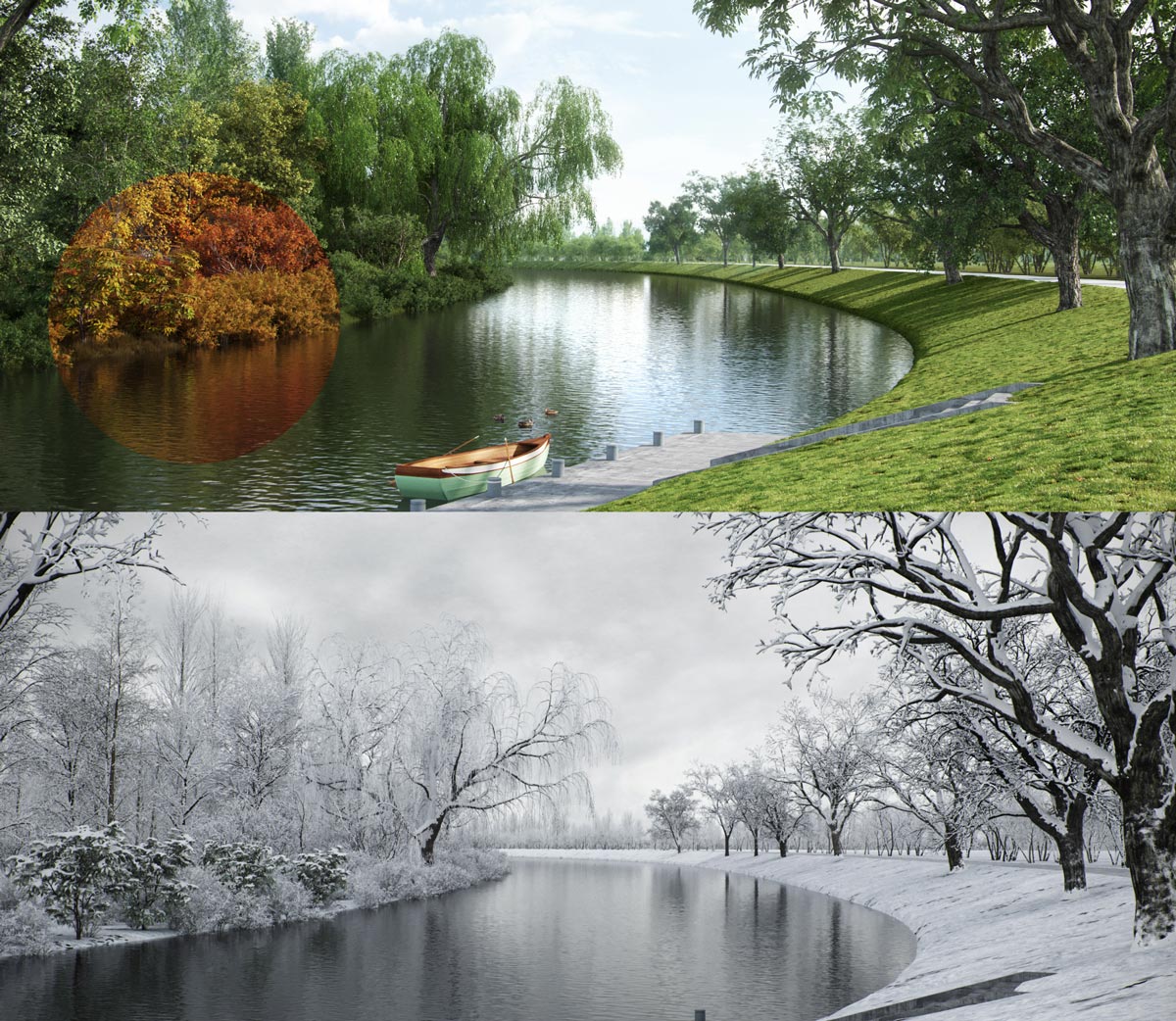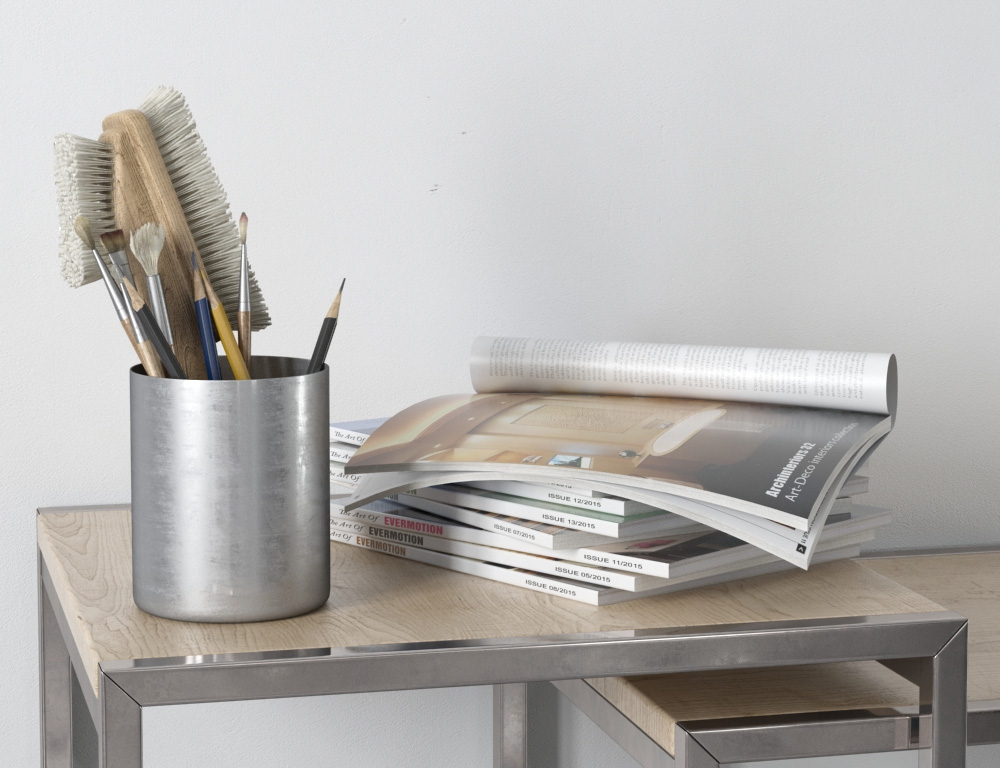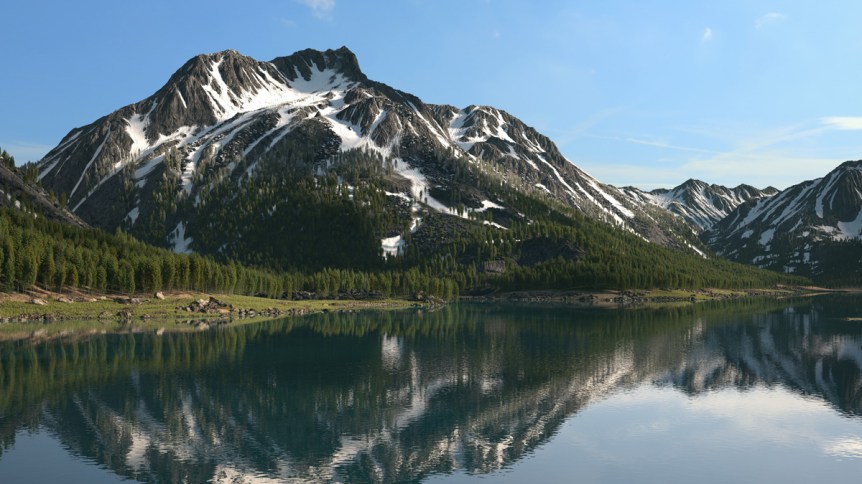If you’re reading the TurboSquid blog, you’ve probably already seen some incredible virtual production projects. You might have enjoyed behind-the-scenes shots of The Mandalorian. Or, perhaps you’ve witnessed the ape VFX evolve (no pun intended) in the recent Planet of the Apes movies.
But inspiration is just the first step. Before adopting any new technology, it’s crucial to know exactly what its benefits are. That’s why we’ve put together our 12 advantages of virtual production below. Read on to learn why your team should consider adopting VP for your next film, TV show, advertising project, and more.
The Advantages of Virtual Production
1. Your film stage will know no boundaries
Does your story take place in a sandy, desert environment? Or does it take place in a dimly lit, moody pub? Virtual production enables filmmakers to create all of the locations of a movie or TV show from the convenience of one stage.
Securing a place to film can frequently require costly travel, permits, and all of the associated expenses that go along with it. A director using virtual production can customize various environments in one place to fit their needs, such as littering Ellis Island with pieces of alien technology around the Statue of Liberty.
2. You’ll see a real-time preview of your scenes
Scenes incorporating a lot of CGI usually have to go through the hands of numerous people on a broader team before you’re able to see the outcome of what was filmed. But, with virtual production, you can review the cinematic shots in real-time to see if you need to move a camera to a position that better serves the mood and atmosphere of the shot.
3. You’ll save precious time moving post-production to pre-production
Collaboration between teams, especially with real-time engines, can cut off hours of extra time needed to complete a project. That’s because instead of post-production, you’ll need to spend more time frontloading your project in pre-production: creating final backdrops and effects that will appear on an LED screens during the shoot.
While it can be challenging to prepare for the start of the project, it can pay off in the long run. Zach Alexander, Founder and COO of Lux Machina, has gone on record stating, “Every hour of pre-production is worth two hours of production.”
4. No more dependency on the elements
Filming outdoors comes with an endless list of variables that can delay your shooting schedule, such as waiting for a particular season to arrive or taking advantage of the limited sunlight available. However, virtual production gives filmmakers much better control over the environment they’re shooting in.
Filmmakers can make real-time adjustments to where the sun is in the sky or add environmental details such as dust, mud, or snow. And this can all be done in a temperature-controlled climate that’s more comfortable for filming a movie or TV show.

5. Less hassle to fix something in post
Imagine shooting a scene in a distant location and later discovering that you could have used one more shot to complete it the way you wanted it. Traditionally, it would require additional travel time and budget to return to the area (or some clever filmmaking techniques).
When environments are saved in-engine, virtual production enables filmmakers to load up the scene they need to finalize so they can get the shot and keep moving to completion—all without the hassle of travel time and coordination.
6. More talent options
In-demand actors with busy schedules may only have two to three days to spare for a shoot, which means longer travel time may not be viable for their schedule. With virtual production, you can maximize the time available for your talent on set.
7. Better immersion for your actors
If you’ve ever seen someone act in front of a green screen, you might understand how challenging it would be to emotionally react to something like a tennis ball on a stick in a setting you can’t physically see.
The LED screens used in virtual production create a sense of atmosphere your actors can better understand, which could lead to better performances overall. “It’s pretty surreal,” says Fabien Frankel, an actor who played Sir Criston Cole on House of the Dragon. “It’s a lot easier ‘cause you’re not imagining everything. It’s there in front of you.”
8. Find the right props quickly (and sustainably)
Props for film or TV come in all shapes and sizes, some of which can be easy to find, some difficult. The team that worked on Muppets Haunted Mansion needed specific props for the spooky Disney+ family film, so they turned to TurboSquid for some easily accessible assets to customize. Virtual production makes it easy to create props that match the set dressing of your location. If you don’t have the time to create props from scratch, try searching for something to use in our massive database of 3D models.
9. Reduced set waste
Catering food, fuel for vehicles, and even the set walls can all add up to a lot of refuse when you’re shooting on location out in the middle of nowhere. If you’d like your next project to be more sustainable, TurboSquid 3D assets are a fantastic alternative. Pro tip: It’s also simpler to acquire TurboSquid assets and get legal approval.
10. Simple storage and access to set decoration
One of the best parts of using digital assets is the ease of storing them. Generally, if you need to keep materials for later use, it requires valuable physical storage space. Digital assets are not only easily accessible, but anyone on your team can access them quickly anywhere there’s an internet connection.

11. Digital multiplex lighting synced to your virtual production
Digital multiplex (DMX) lighting has been around for years, but it’s the ability to sync with the engine you’re using in virtual production that truly makes it a game changer. For example, if you have a shot of your actor walking under street lights, the DMX lighting can imitate the slow passing of each light above the actor’s head in perfect unison with the movement in the LED panels. Need to get a second shot? It’s easy to retake in a controlled environment with controlled lighting.
12. Decentralized collaboration
Professionals are accustomed to remote work in nearly every country, so a large selection of freelancers and companies makes virtual production a useful alternative to traditional production set on location.
Not only does your team get a wider pool of people to work with, but you also potentially get better options for your budget.
Ready to get started using virtual production? Learn how our stock assets can help build virtual backdrops faster here, and discover how Shutterstock Studios can power your virtual productions and more here.

